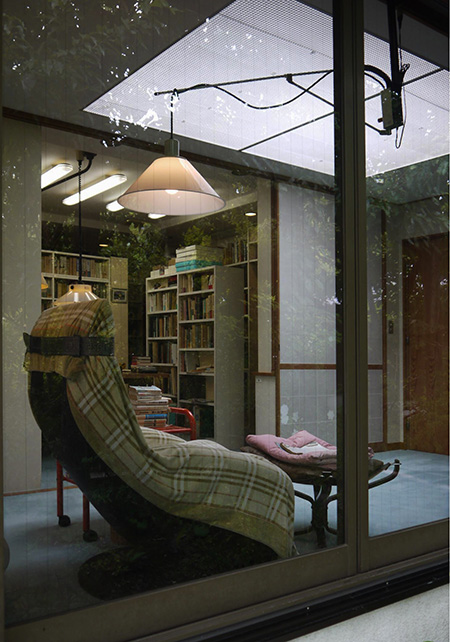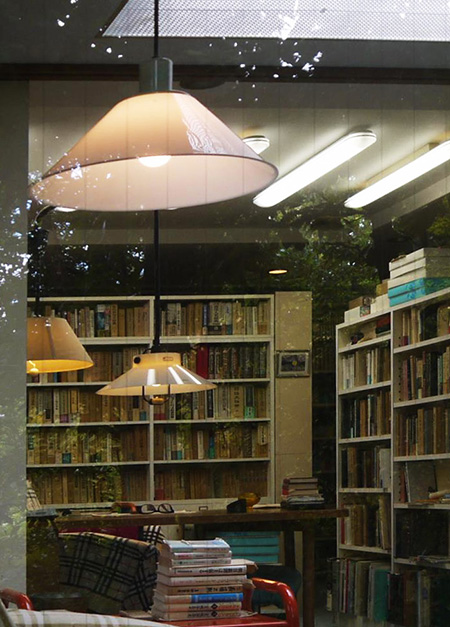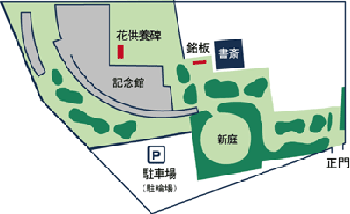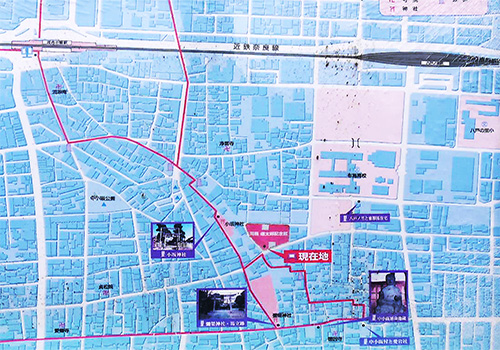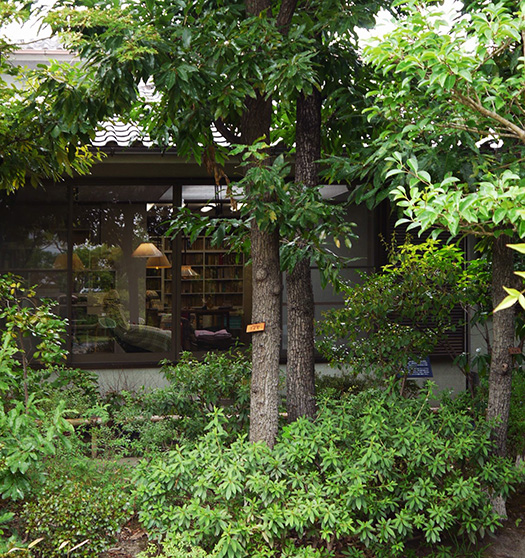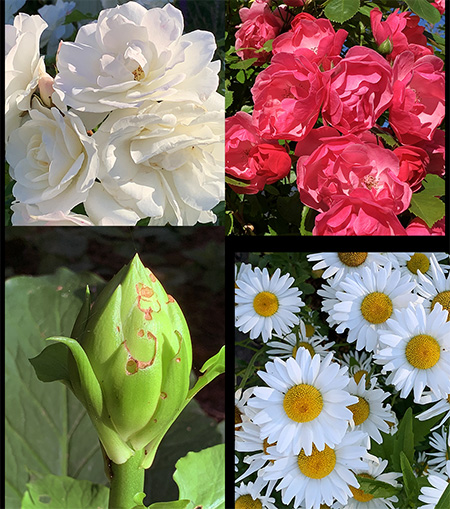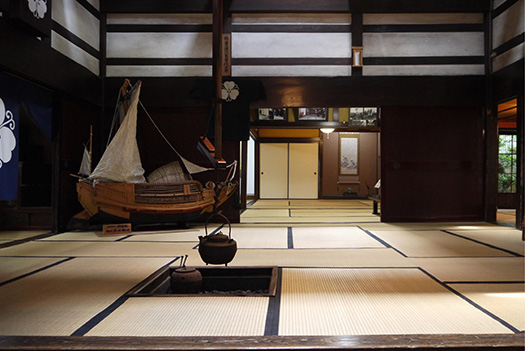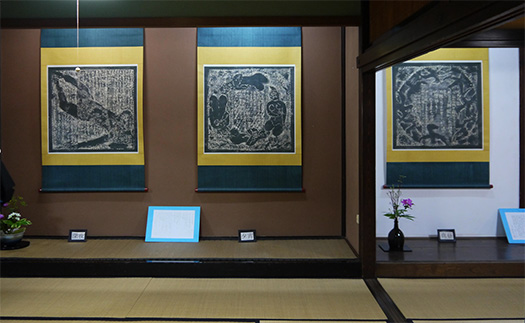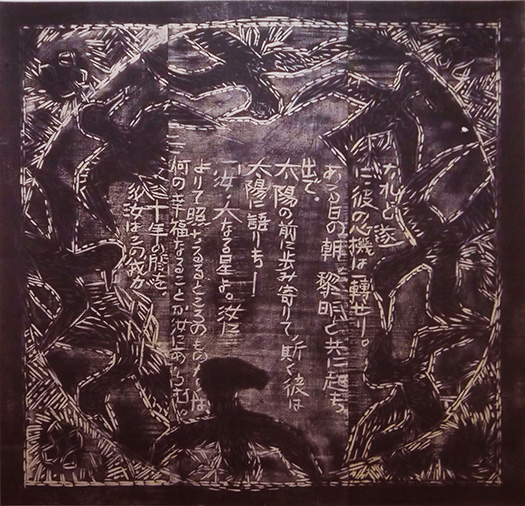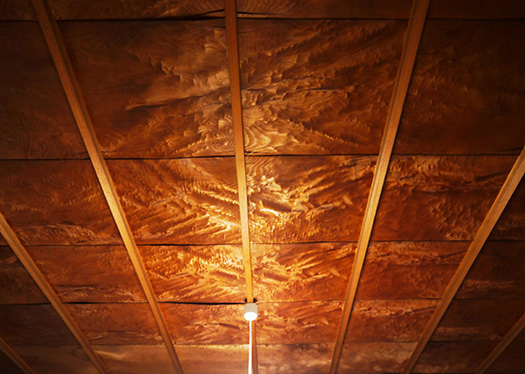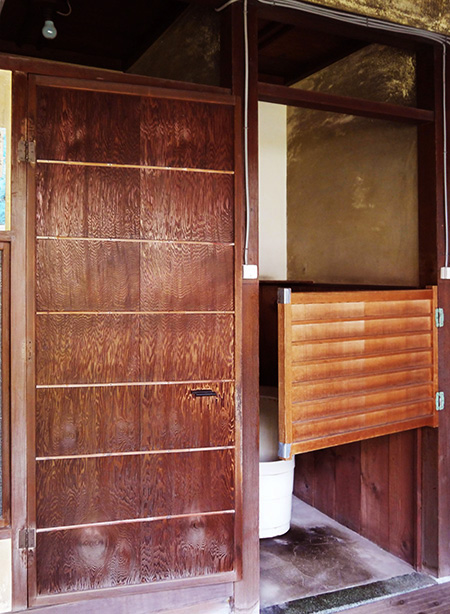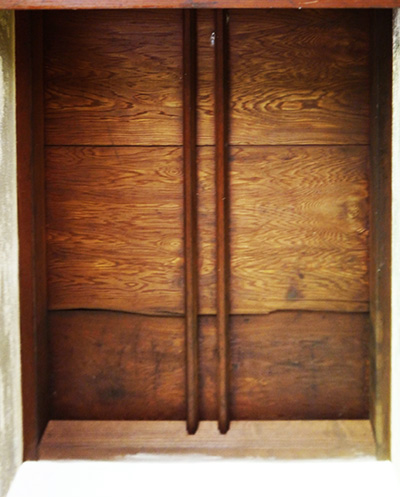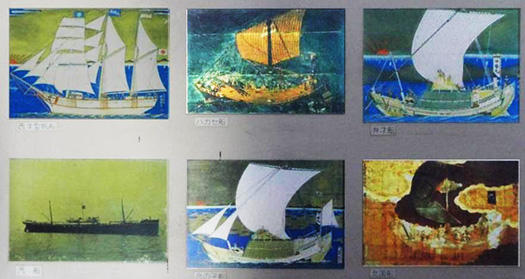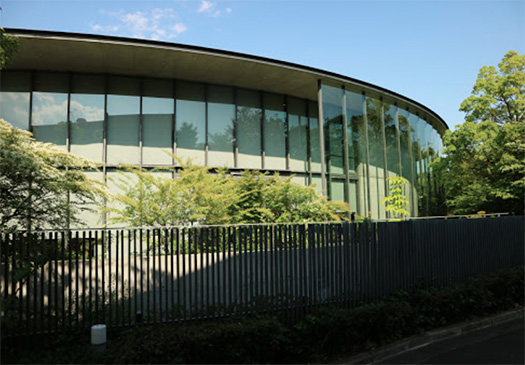
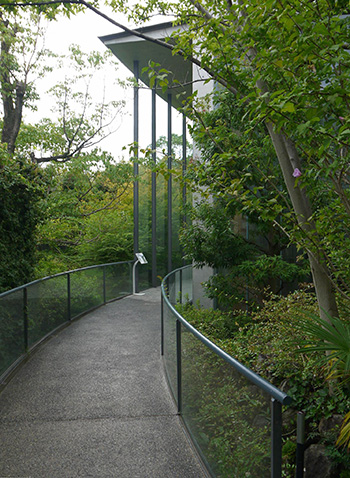
この記念館にはレンタカーを借りていきました。
5−6台ほどの駐車スペースがあってそこに停め敷地を前面道路に沿って
ぐるっと回り込んで入口門がある。駐車場に面してRを描く弧状外観。
安藤忠雄設計、錢高組施工の司馬遼太郎記念館。
・・・とは言ってもわたしの場合、安藤建築であることは着いてからわかった(笑)。
「えっと、あ、ここだな。あれ、なんかアバンギャルド・・・」
っていうような印象でしたが、てっきりこれは隣接する建物で
司馬遼太郎という歴史作家の住まいというのは、質素な住宅を想像していた。
事実、門から入って「書斎」をじっくり見ているときには
そういう印象が実にふさわしくスッと受け入れられてきていた。
で、こちらの記念館に向かうにつれてこれが安藤忠雄設計と知れてきた。
まぁ一粒で二度美味しいみたいな驚きが襲ってきた次第。
いかにも事前調査がずさんなまま、行動してしまった自分が可笑しくなった。
まことに恥ずかしいほどにうかつな話ですが、
個人的には住宅や建築がライフワークになる以前からずっと
作家とは対話し続けてきた時間があるので、余念を持たなかったのですね。
その後もなぜ安藤忠雄が司馬遼太郎記念館を設計したのか、
あんまり深く考えては来なかった。
同じ大阪人として営業活動もしっかりやっていた安藤さんらしく、
司馬遼太郎さんとは近しい関係を持っていただろうことは想像に難くない。
ただ、日本文学史上稀有な歴史作家の記念館にコンクリート打ち放しの
デザインが似合っているのかどうかは、わたしには判断できない。
自分の中ではまったく別物として見させていただいた次第。
安藤さんの建築ではなんどか、茶室への導線のようにアプローチを
回遊させるというパターンがある。
ここでも「ガラスの回廊」的な2階分の屋根付きアプローチが
Rを描いてその先を見通せないようにぐるっと歩かされる。
たしか北海道・占冠の「水の教会」でもいったんいちばん遠くまで回遊させて
そこからターンしたときにみごとな鏡のような水面に出会う。
そこからガラスで区切られた教会に入っていく・・・。
おお、あれかなぁ・・・やっぱり、というヤツ。
しかし外側のガラスは1枚もののガラスのようだ。シンプルでいて耽美的。
そうすると、とその先の展開へのワクワク感が増幅してくる・・・。
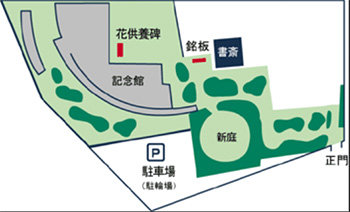
で、このアプローチでは回遊導線に沿って
鉄柱が建て込まれて、その空隙部分はガラスが張られている。
司馬さんの家の敷地にはきのう触れたようにできるだけその地の自然の
緑が覆いつくすように繁茂している。雑木林in東大阪。
コンクリートの建築本体と緑の調和を計るように
透明な「結界」が意図されているのでしょうか?
ともあれ、ゆるやかなカーブを描く導線に導かれて記念館に向かう。
<〜つづく>
English version⬇
[Tadao Ando’s “Ryotaro Shiba” Architecture / Good Japanese House ㉟-4]
I rented a car to this memorial hall.
There is a parking space for about 5-6 cars, and you can park there and set the site along the front road.
There is an entrance gate that goes around. Arc-shaped appearance that draws an R facing the parking lot.
Shiba Ryotaro Memorial Hall designed by Tadao Ando and constructed by Zenitaka Corporation.
However, in my case, I knew that it was Ando architecture (laughs).
“Well, here it is. Oh, it’s an avant-garde …”
I had the impression that this was an adjacent building.
The residence of a historical writer named Ryotaro Shiba imagined a simple house.
In fact, when you enter through the gate and take a closer look at the “study”
Such an impression has been accepted as it should be.
So, as I headed to this memorial hall, it became known as Tadao Ando’s design.
Well, as soon as I was surprised that one grain was delicious twice.
It made me laugh when I acted without the preliminary investigation.
It ’s an embarrassing story, but
Personally, even before housing and architecture became a lifework
You have had time to talk with the artist, so you didn’t have to worry about it.
Why did Tadao Ando design the Shiba Ryotaro Memorial Hall after that?
I didn’t think too much about it.
Like Mr. Ando, who was also doing sales activities as the same Osaka person,
It’s not hard to imagine that he would have had a close relationship with Ryotaro Shiba.
However, the concrete is exposed in the memorial hall of a historical writer, which is rare in the history of Japanese literature.
I can’t tell if the design looks good.
As soon as I saw it as a completely different thing.
In Mr. Ando’s architecture, he approaches like a lead wire to a tea room.
There is a pattern of migrating.
Again, the “glass corridor” -like second-floor covered approach
Draw an R and walk around so that you can’t see beyond it.
Certainly, even at the “Chapel on the Water” in Shimukappu, Hokkaido, let’s go to the farthest place
When you turn from there, you will meet a wonderful mirror-like water surface.
From there, we enter the glass-separated church …
Oh, that’s … after all, that guy.
But the outer glass looks like a piece of glass. Simple and aesthetic.
Then, the excitement for the future development will be amplified.
So, in this approach, along the migratory conductor
An iron pillar is built, and the gap is covered with glass.
As I touched on the site of Mr. Shiba’s house yesterday, as much as possible
It is overgrown with greenery.
To harmonize the green with the concrete building body
Is a transparent “barrier” intended?
Anyway, I headed to the memorial hall, guided by a conductor that draws a gentle curve.
Posted on 6月 29th, 2021 by 三木 奎吾
Filed under: 住宅マーケティング, 日本社会・文化研究 | 2 Comments »


